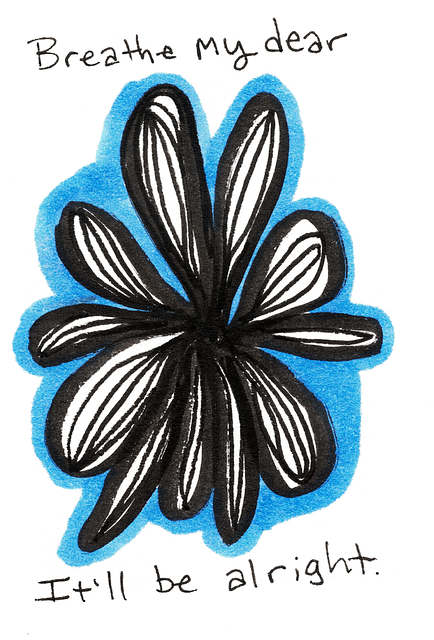Castle Rock Autism Spectrum Disorder (ASD) Therapy offers specialized support for individuals on the spectrum and their families, focusing on evidence-based interventions like applied behavior analysis and cognitive behavioral therapy. Public awareness campaigns should be data-driven, utilizing surveys to understand community knowledge and attitudes, and employing compelling narratives, visual aids, and diverse media platforms to educate and inspire action. Inclusive campaign strategies involve accessible language, multiple channels, and tailored resources, including visual aids, sign language interpretation, and multilingual materials. Effective risk management ensures culturally competent care when addressing sensitive topics. Measuring campaign impact through KPIs like knowledge increase and therapy-seeking behavior is crucial for refining and scaling up successful initiatives, fostering positive outcomes like enhanced self-care routines and depression prevention.
“Public awareness campaigns play a pivotal role in shaping societal understanding of complex conditions like autism spectrum disorder (ASD). This article explores the evolution of awareness efforts, focusing on the innovative practices employed by Castle Rock Autism Spectrum Disorder Therapy.
We’ll delve into strategies that have proven effective in engaging diverse communities, from crafting compelling narratives to implementing inclusive communication. Furthermore, we’ll discuss measurement techniques to evaluate the impact and enhance future initiatives.”
- Understanding Castle Rock Autism Spectrum Disorder Therapy: A Foundation for Awareness
- Crafting Effective Public Awareness Campaigns: Strategies and Techniques
- Engaging Diverse Audiences: Inclusive Communication for Behavior Change
- Measuring Impact and Iteration: Evaluating the Success of Awareness Initiatives
Understanding Castle Rock Autism Spectrum Disorder Therapy: A Foundation for Awareness

Castle Rock Autism Spectrum Disorder (ASD) Therapy is a specialized approach designed to support individuals with ASD and their families. By understanding the unique challenges and strengths associated with ASD, this therapy offers a comprehensive framework for improving quality of life. It focuses on evidence-based practices, tailored interventions, and fostering inclusive environments, ultimately empowering those on the spectrum to reach their full potential.
This therapeutic approach is particularly crucial in addressing the common social, communication, and behavioral difficulties often experienced by individuals with ASD. Through targeted strategies, such as applied behavior analysis and cognitive behavioral therapy, Castle Rock ASD Therapy helps manage symptoms, promote independence, and enhance overall well-being. Moreover, it emphasizes self-care practices like stress management and burnout prevention strategies for healthcare providers, recognizing the importance of balancing support for clients with maintaining caregiver resilience. Effective stress reduction methods are integral to this process, ensuring that both individuals with ASD and their supporting networks can thrive in a supportive and understanding environment.
Crafting Effective Public Awareness Campaigns: Strategies and Techniques

Crafting effective public awareness campaigns requires a strategic approach that resonates with the target audience. For Castle Rock Autism Spectrum Disorder (ASD) Therapy, for instance, understanding the community’s current knowledge and attitudes towards ASD is crucial. This involves conducting surveys, focusing on both adults and children, to gauge their level of understanding, any misconceptions, and their openness to therapy options. By employing this data, campaign organizers can tailor messages that either educate or reinforce existing positive perceptions.
The key to a successful awareness campaign lies in its ability to inspire action. Incorporating compelling narratives, perhaps from individuals who have benefited from ASD therapy, can foster empathy and encourage further exploration of self-care practices, emotional regulation techniques, and mental wellness resources. Visual aids, such as infographics or videos, also play a significant role in simplifying complex topics while maintaining attention. Additionally, leveraging various media platforms ensures that the campaign reaches diverse audiences, ultimately fostering a more supportive environment for those navigating ASD and related challenges.
Engaging Diverse Audiences: Inclusive Communication for Behavior Change

Creating public awareness campaigns that effectively engage diverse audiences is a powerful tool for behavior change, especially when addressing topics like Castle Rock Autism Spectrum Disorder Therapy. Inclusive communication means crafting messages that resonate with individuals from various backgrounds, ages, and abilities. This approach ensures that everyone, regardless of their unique needs, can understand and benefit from the campaign’s message.
By employing inclusive language and utilizing multiple communication channels, organizations can reach a broader spectrum of people. For instance, a well-designed Community Outreach Program Implementation might include visual aids, videos with sign language interpretation, and written resources available in multiple languages. Such an approach not only accommodates but also empowers individuals on the autism spectrum and their families to access information and services effectively. Moreover, incorporating Stress Reduction Methods within these campaigns can help mitigate potential triggers and promote a sense of calm, fostering a more positive response to the initiatives. Additionally, Risk Management Planning for Mental Health Professionals is crucial when addressing sensitive topics like autism therapy; it ensures that practitioners are equipped to handle diverse reactions and provide culturally competent care.
Measuring Impact and Iteration: Evaluating the Success of Awareness Initiatives

Measuring the impact of public awareness campaigns is a vital step in understanding their effectiveness and guiding future initiatives. It involves evaluating various metrics to assess both short-term and long-term success, such as increased knowledge about Castle Rock Autism Spectrum Disorder Therapy among the target audience or changes in behavior related to seeking therapy. This process helps identify what works best and where improvements are needed. By analyzing key performance indicators (KPIs), organizations can pinpoint successful strategies for raising awareness and making necessary adjustments to campaigns over time.
Iteration is a critical component of public awareness campaign development. After assessing initial outcomes, refining the approach becomes possible. For instance, if a particular method proves effective in reaching and engaging the intended demographic, it could be replicated or scaled up. Conversely, if certain tactics show limited impact, they can be modified or replaced to better resonate with the target population. This continuous improvement cycle ensures that campaigns remain relevant, impactful, and aligned with the needs of the communities they aim to serve, ultimately fostering positive outcomes like enhanced self-care routine development for better mental health and depression prevention.
Public awareness campaigns play a pivotal role in fostering understanding and acceptance of neurodiversity, such as Castle Rock Autism Spectrum Disorder Therapy. By employing strategic communication methods, engaging diverse audiences through inclusive narratives, and continuously measuring impact, we can create meaningful change. These initiatives not only educate but also promote empathy and support for individuals on the autism spectrum, ultimately enriching our communities.










